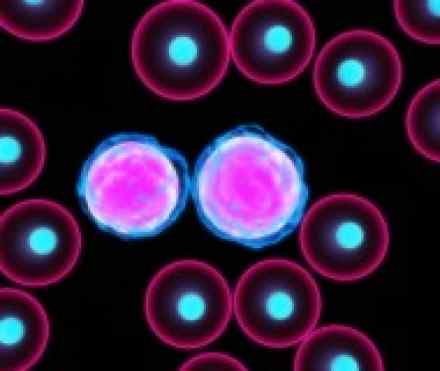
What is it?
Leukemia is cancer of the body's blood-forming tissues, including the bone marrow and the lymphatic system.
Many types of leukemia exist. Some forms of leukemia are most common in children. Other forms of leukemia occur mostly in adults.
Leukemia usually starts in the white blood cells. Your white blood cells are potent infection fighters — they normally grow and divide in an orderly way, as your body needs them. But in people with leukemia, the bone marrow produces a large number of abnormal white blood cells, which don't function properly.
Treatment for leukemia can be complex — depending on the type of leukemia and other factors. But there are strategies and resources that can help to make your treatment successful.
Symptoms
Leukemia symptoms vary, depending on the type of leukemia. Common leukemia signs and symptoms include:
- Fever or chills
- Persistent fatigue, weakness
- Frequent infections
- Losing weight without trying
- Swollen lymph nodes, enlarged liver or spleen
- Easy bleeding or bruising
- Tiny red spots in your skin (petechiae)
- Excessive sweating, especially at night
- Bone pain or tenderness
Causes
Scientists don't understand the exact causes of leukemia. It seems to develop from a combination of genetic and environmental factors.
How leukemia forms
In general, leukemia occurs when some blood cells acquire mutations in their DNA — the instructions inside each cell that guide its action. The mutations cause the cell to grow and divide more rapidly and to continue living when normal cells would die. Over time, these abnormal cells can crowd out healthy blood cells, causing the signs and symptoms of leukemia.
How leukemia is classified
Doctors classify leukemia based on its speed of progression and the type of cells involved.
The first type of classification is by how fast the leukemia progresses:
- Acute leukemia. In acute leukemia, the abnormal blood cells are immature blood cells (blasts). They can't carry out their normal work, and they multiply rapidly, so the disease worsens quickly. Acute leukemia requires aggressive, timely treatment.
- Chronic leukemia. This type of leukemia involves more mature blood cells. These blood cells replicate or accumulate more slowly and can function normally for a period of time. Some forms of chronic leukemia initially produce no symptoms and can go unnoticed or undiagnosed for years.
The second type of classification is by type of white blood cell affected:
- Lymphocytic leukemia. This type of leukemia affects the lymphoid cells or lymphocytes, which form lymphoid or lymphatic tissue. Lymphatic tissue makes up your immune system.
- Myelogenous leukemia. This type of leukemia affects the myeloid cells. Myeloid cells give rise to red blood cells, white blood cells and platelet-producing cells.
Types of leukemia
The major types of leukemia are:
- Acute lymphocytic leukemia (ALL). This is the most common type of leukemia in young children. ALL can also occur in adults.
- Acute myelogenous leukemia (AML). AML is a common type of leukemia. It occurs in children and adults.
- Chronic lymphocytic leukemia (CLL). With CLL, the most common adult leukemia, you may feel well for years without treatment. CLL is very rare in children.
- Chronic myelogenous leukemia (CML). This type of leukemia mainly affects adults. A person with CML may have few or no symptoms for months or years before entering a phase in which the leukemia cells grow more quickly.
Other, rarer types of leukemia exist, including hairy cell leukemia.
Risk factors
Factors that may increase your risk of developing some types of leukemia include:
- Previous cancer treatment. People who've had certain types of chemotherapy and radiation therapy for other cancers have an increased risk of developing certain types of leukemia.
- Genetic diseases. Genetic abnormalities seem to play a role in the development of leukemia. Certain genetic diseases, such as Down syndrome, are associated with increased risk of leukemia.
- Certain blood disorders. People who have been diagnosed with certain blood disorders, such as myelodysplastic syndromes, may have an increased risk of leukemia.
- Exposure to high levels of radiation. People exposed to very high levels of radiation, such as survivors of a nuclear reactor accident, have an increased risk of developing leukemia.
- Exposure to certain chemicals. Exposure to certain chemicals, such as benzene — which is found in gasoline and is used by the chemical industry — also is linked to increased risk of some kinds of leukemia.
- Smoking. Smoking cigarettes increases the risk of acute myelogenous leukemia.
- Family history of leukemia. If members of your family have been diagnosed with leukemia, your risk of the disease may be increased.
However, most people with known risk factors don't get leukemia. And many people with leukemia have none of these risk factors.
Diagnosis
Doctors often find chronic leukemia in a routine blood test, before symptoms begin. If this happens, or if you have signs or symptoms that suggest leukemia, you may undergo the following diagnostic exams:
- Physical exam. Your doctor will look for physical signs of leukemia, such as pale skin from anemia and swelling of your lymph nodes, liver and spleen.
- Blood tests. By looking at a sample of your blood, your doctor can determine if you have abnormal levels of white blood cells or platelets — which may suggest leukemia.
- Bone marrow test. Your doctor may recommend a procedure to remove a sample of bone marrow from your hipbone. The bone marrow is removed using a long, thin needle. The sample is sent to a laboratory to look for leukemia cells. Specialized tests of your leukemia cells may reveal certain characteristics that are used to determine your treatment options.
You may undergo additional tests to confirm the diagnosis and to determine the type of leukemia and its extent in your body. Certain types of leukemia are classified into stages, indicating the severity of the disease. Your leukemia's stage helps your doctor determine a treatment plan.
References
http://www.nhs.uk/Conditions/leukaemia-acute/Pages/Introduction.aspx
http://www.medicinenet.com/leukemia/page5.htm
http://www.cancercenter.com/leukemia/symptoms/http:/
http://www.webmd.com/cancer/tc/leukemia-topic-overview

